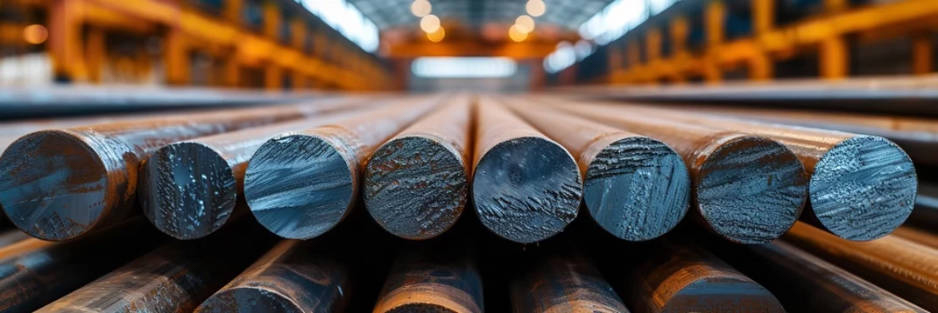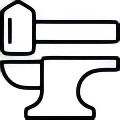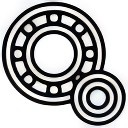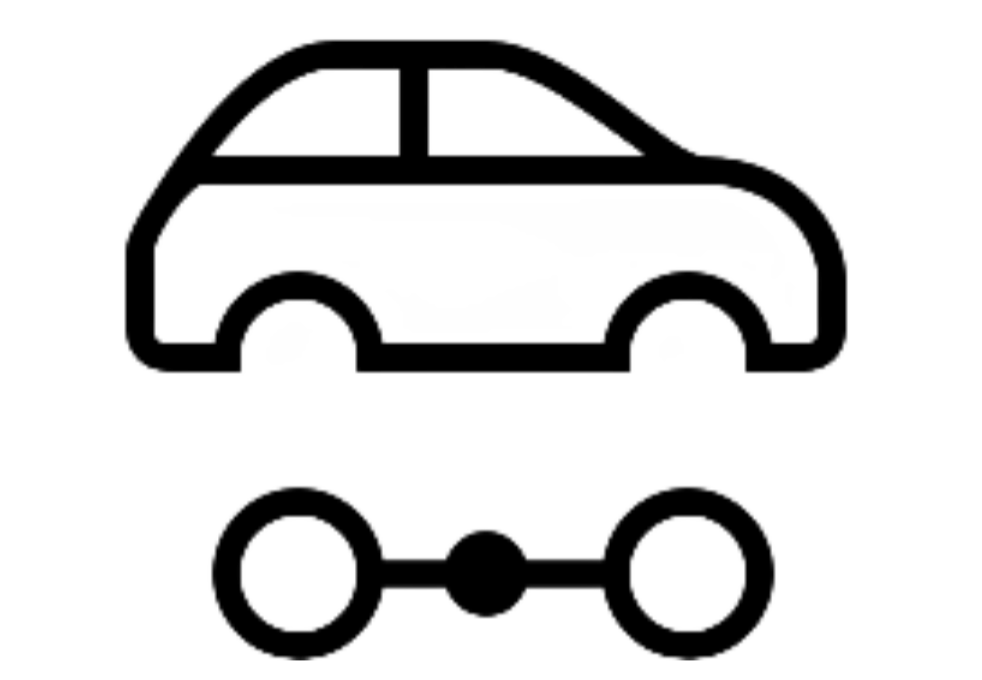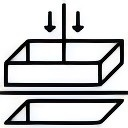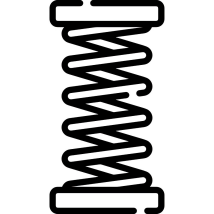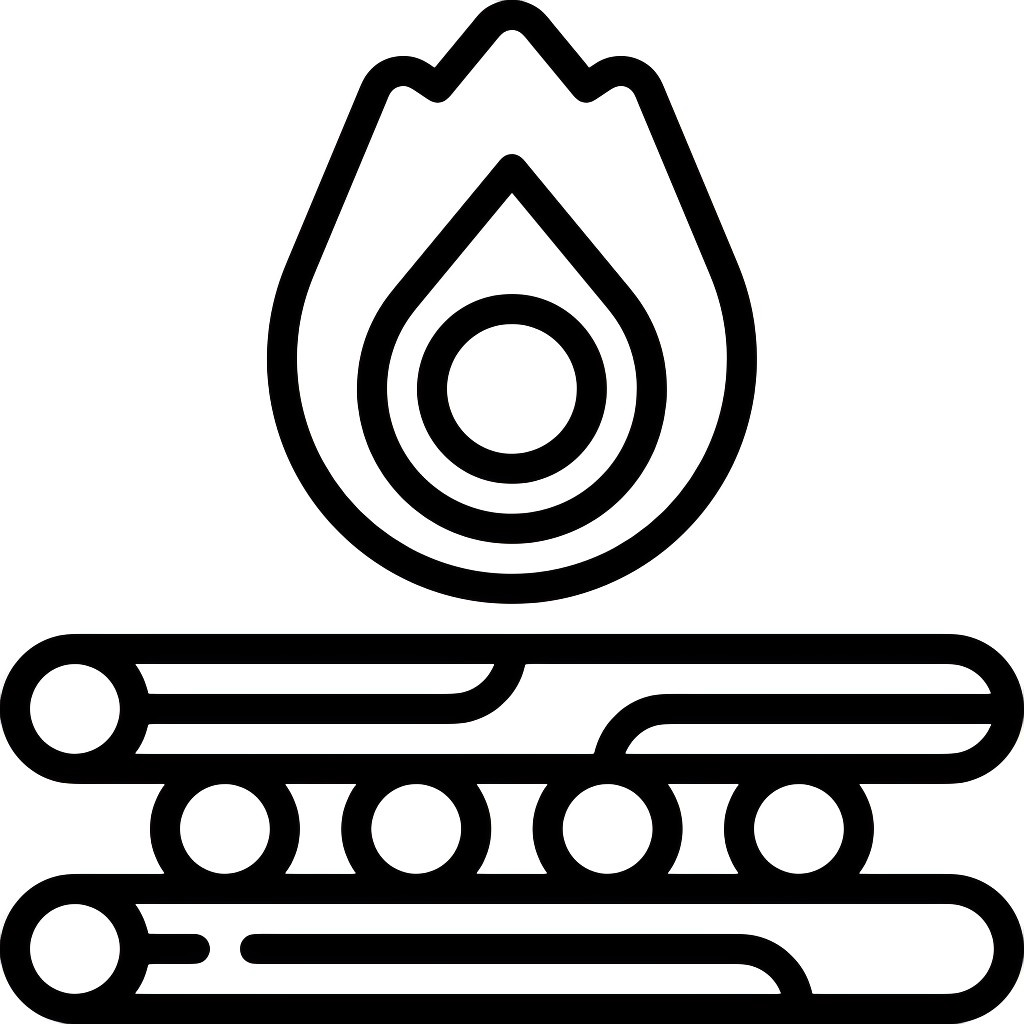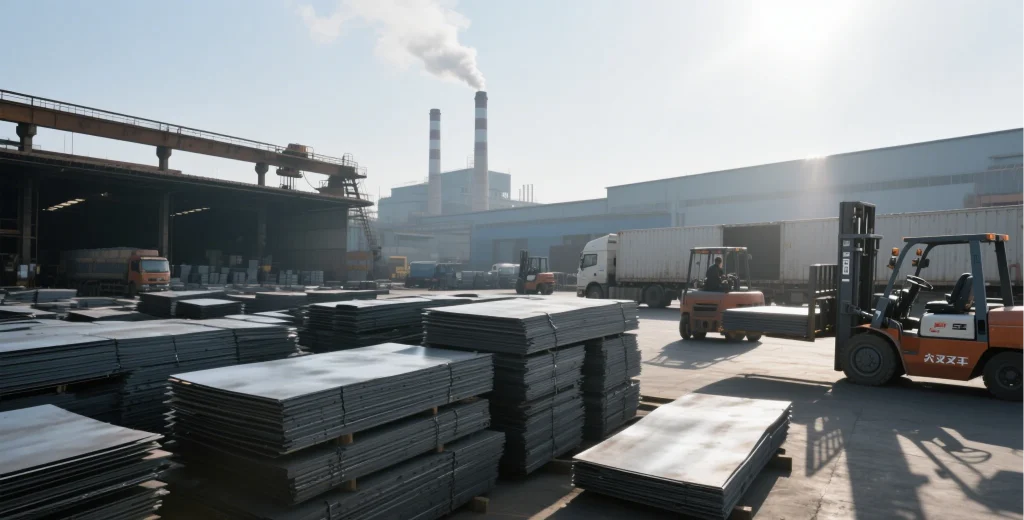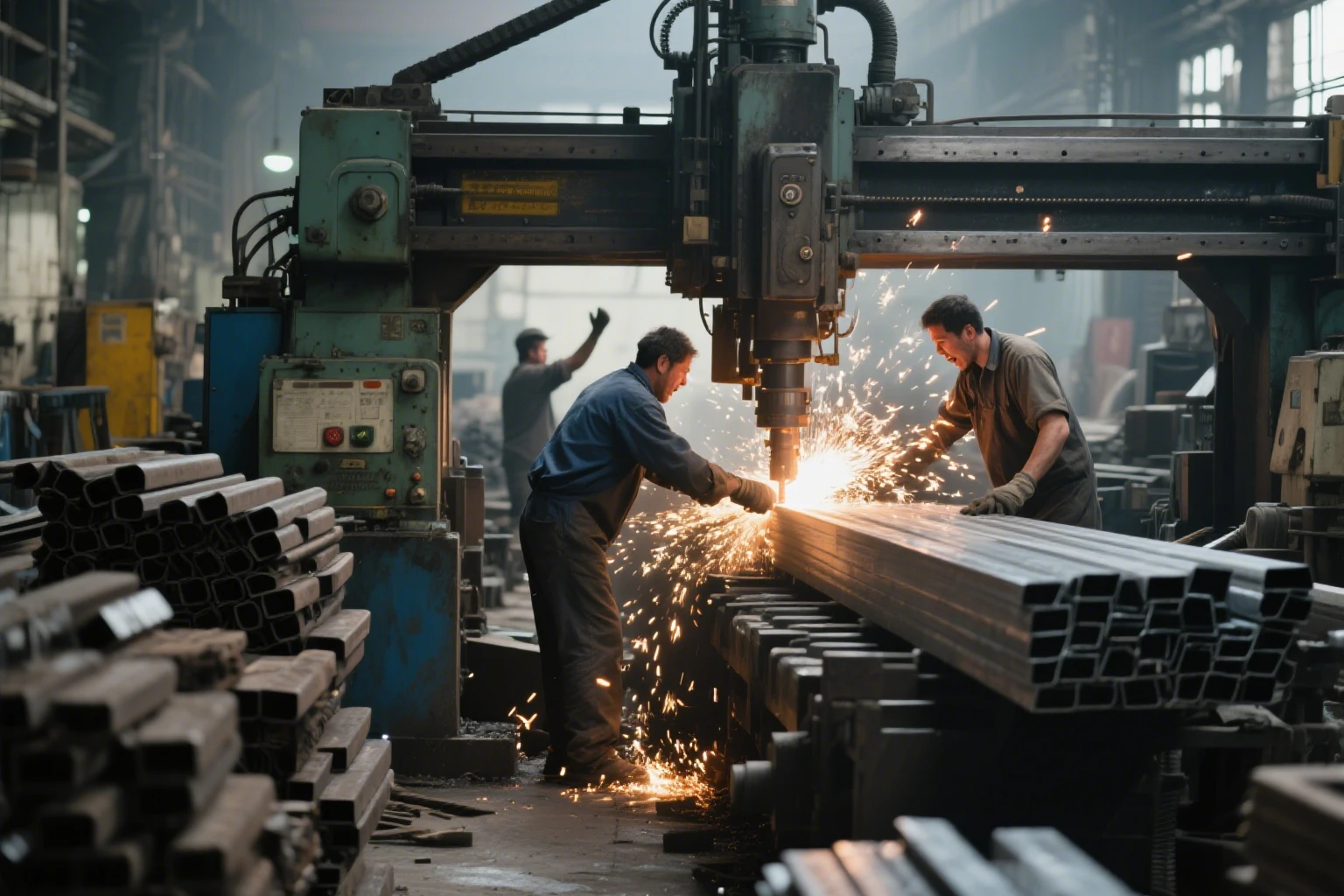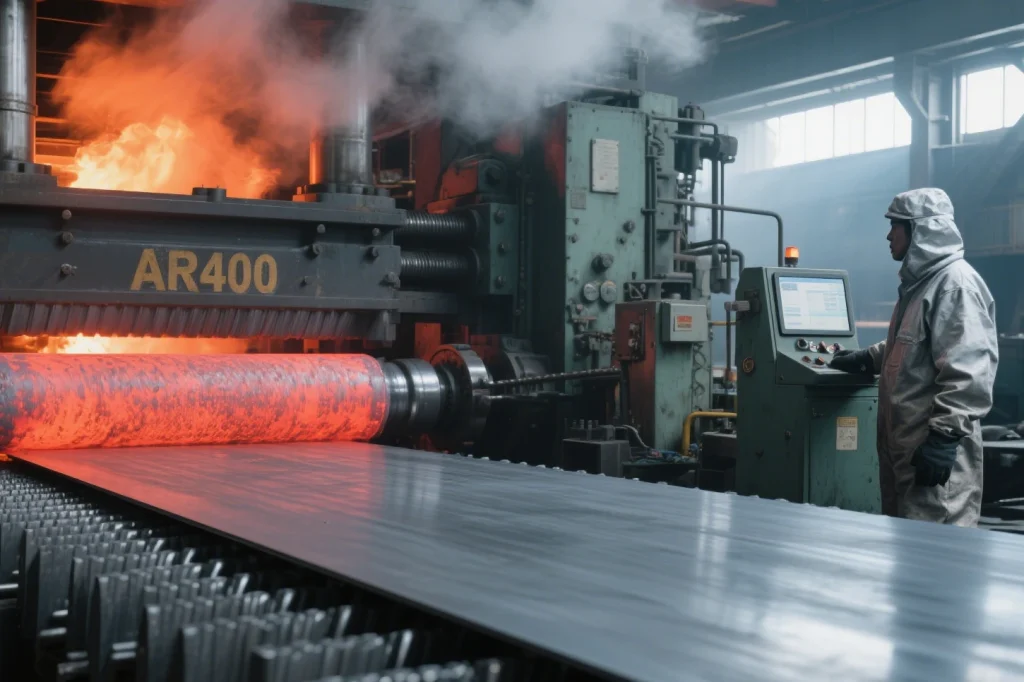
Comparing Wear Resistance and Toughness of AR400 vs AR500 Steel
AR500’s Top-Notch Strength for Really Rough Conditions
AR500 abrasion-resistant steel is engineered for extreme wear environments. It’s very hard, about 500 Brinell hardness. That makes it one of the hardest steel products for scratch and scuff resistance. It will withstand materials such as sand, rocks, or heavy equipment pieces for decades. It will not wear out easily, even being rubbed or bumped repeatedly.
You’ll see this steel in tough industries like mining, defense, or bulletproof gear. It stays strong under crazy pressure. AR500 has passed the standard as a steel products. You have no doubt for its durability. But there’s a catch. AR500 is tricky to cut or weld compared to softer steels. Still, its awesome durability makes it last in harsh spots where other materials would give up fast.
AR400’s Solid Mix of Strength and Flexibility
AR400 steel strikes a nice balance between being tough and bendable. It’s got a hardness of about 400 Brinell. Not quite as strong as AR500, but it still handles wear really well for lots of jobs. Its slightly softer nature makes it easier to work with. You can cut, shape, or weld it without too much hassle. That’s why it’s used in places like construction, farming, and factories.
AR400 is great when you need something that fights wear but can also take a bit of flexing. Think dump truck liners, buckets, or construction tools. They deal with moderate wear but need to handle some bumps without cracking.
How Do AR400 and AR500 Stack Up for Impacts and Cold Weather?
AR400’s Extra Grit for Big Hits and Freezing Temps
AR400 really shines when it comes to toughness. It’s better at taking hits than harder steels like AR500. Toughness is about soaking up force without breaking. That’s super important for heavy impacts or cold places where materials can get brittle. AR400’s balanced makeup does well here. It still keeps decent wear resistance too.
This makes AR400 a go-to for rough jobs with big impacts or changing loads. Think quarry gear or snowplow blades in icy weather. It resists cracking when hit hard, which keeps things safe and reliable.
AR500’s Trade-Off: Super Strong but Less Flexible
AR500 is a champ at resisting wear because of its high hardness. But that strength makes it less tough. It can get brittle when hit hard or in super cold conditions. So, it’s not the best pick for jobs needing to absorb a lot of force.
In freezing weather or with constant banging, AR500 might crack if the pressure’s too much. It’s awesome for steady wear tasks, like bulletproof plates or industrial screens. But for jobs needing both strength and give, it’s not the top choice.
Knowing these differences helps folks pick the right steel for their project. Things like toughness, strength, and the work environment all matter.
What Jobs and Industries Are Best for AR400 vs. AR500?
AR500 for Heavy-Duty Mining and Construction Gear
AR500 is perfect for work that needs materials to stand up to brutal wear and tough conditions. Its 500 Brinell hardness gives it killer durability. It’s great for handling rough stuff like rocks, gravel, or heavy equipment parts for a long time. This is a big win in mining, where things like chutes, hoppers, and crushers get beat up daily.
In construction, AR500 shows up in rugged gear like bulldozer blades, excavator buckets, or concrete mixer drums. These need to take a beating and still hold together. AR500’s also used in bulletproof systems. It can take high-speed hits, which is key for military armor or shooting range targets.
The downside? Its hardness makes it a pain to machine or weld. You need special tools and know-how. But when you need something that lasts forever in tough spots, AR500’s worth the effort.
AR400 for Affordable Fixes in Logistics and Everyday Machines
AR400 is a versatile pick for industries wanting durability without a ton of hassle. With 400 Brinell hardness, it fights wear well. But it’s easier to work with than AR500. That makes it great for jobs needing both wear resistance and a bit of bend.
In logistics, you’ll find AR400 in truck bed liners, railcar parts, or conveyor systems. They face some wear but also need to take occasional hits without breaking. It’s also big in farming gear, like plow blades or grain handlers, where toughness and flexibility both count.
Since AR400 is easier to cut, shape, or weld, it saves time and money. It’s a smart choice when you don’t need the absolute toughest wear resistance. That’s why it’s popular in industries that care about getting the job done efficiently.
Why Go with Promispecial® for AR400 and AR500 Steel?
Precision Work and Top-Quality Standards
Promispecial® is a trusted supplier of premium abrasion-resistant steels, delivering precision and quality for demanding applications. Every batch of AR400 and AR500 gets thoroughly tested. We make sure it hits the hardness and performance levels needed for tough jobs. Our commitment to quality means you get materials that work reliably, even in rough conditions.
We use cutting-edge tech to keep thickness and size super precise. This care makes their steel fit perfectly for all kinds of industrial needs. It lowers the chance of problems during use. Plus, our certifications from global standards groups give you peace of mind about safety and quality.
Tailored Options and Worldwide Reach
Promispecial® gets that every industry has its own needs. We offer custom solutions to match specific jobs. Need steel plates cut to exact sizes? Or alloys tweaked for certain conditions? We work with you to deliver what your project needs. Come and contact Promispecial® for your special needs.
Our global supply system means AR400 and AR500 get to you on time, no matter where you are. Our wide network cuts down on shipping headaches. Businesses everywhere can get top-notch materials without delays. We also know export rules inside out, making cross-border deals smooth and easy.
With our know-how and customer-first approach, Promispecial® delivers services that tackle both the technical side and the logistics of getting specialized steels like AR400 and AR500.
FAQ
Q: What welding techniques are recommended for AR500 and AR400 steel plates?
A: Welding: Both can be welded, but AR500 requires more care (preheating and low-hydrogen electrodes) due to its higher hardness and brittleness. AR400 is easier to weld.
Machining: AR400 is easier to machine due to its lower hardness. AR500 is challenging and often requires specialized tools like carbide or diamond-tipped bits.
Q: How do AR500 and AR400 perform in extreme temperatures?
A: AR500: Can become more brittle in cold temperatures, reducing impact resistance. It performs well in high-temperature wear environments.
AR400: Better suited for colder environments due to its higher toughness, but it may wear faster in extreme heat compared to AR500.

